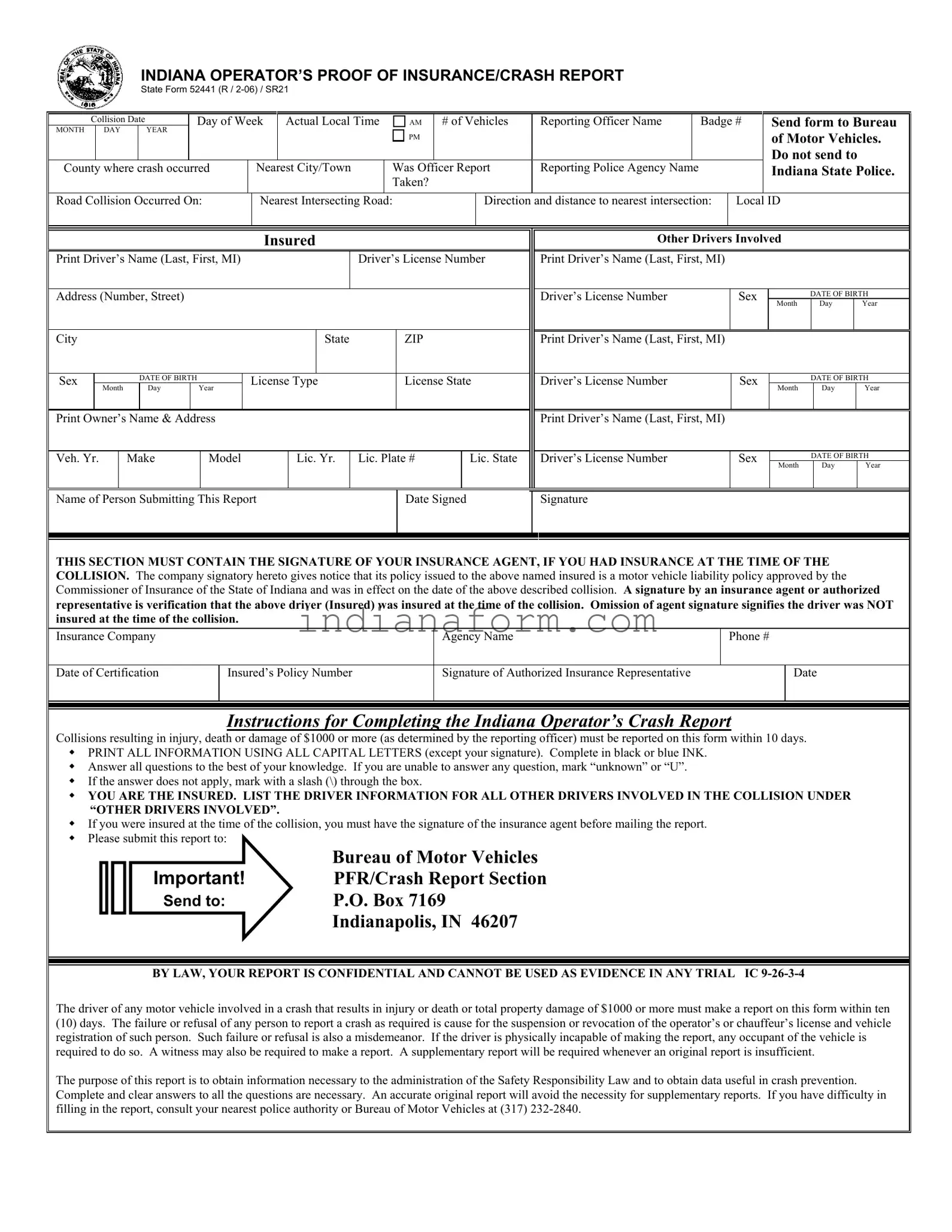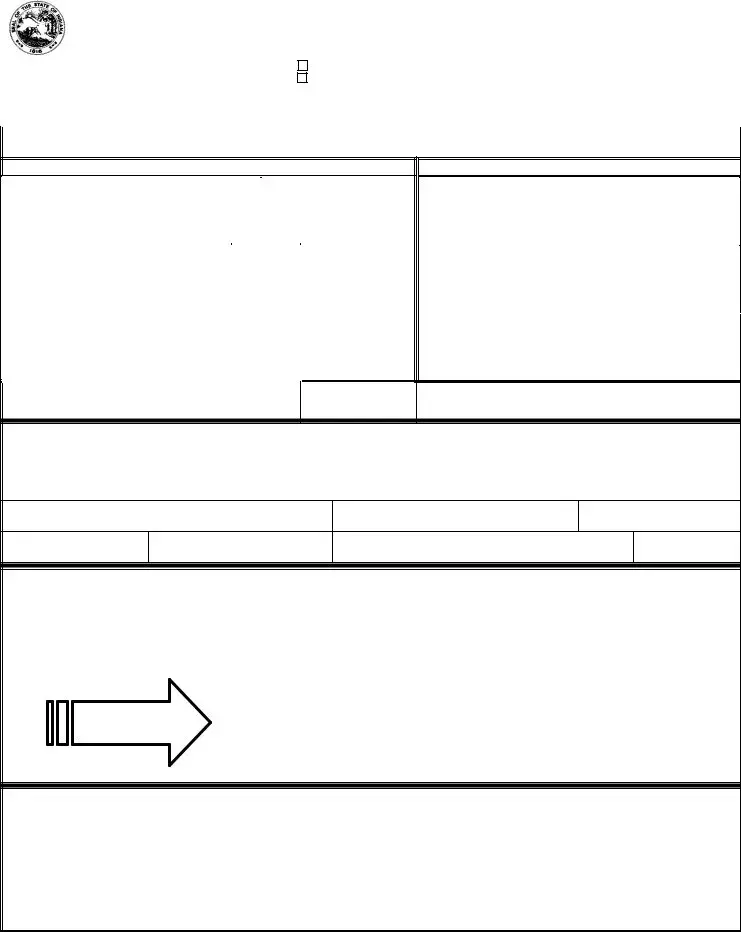What is the Indiana SR21 Form?
The Indiana SR21 Form, officially known as the Indiana Operator’s Proof of Insurance/Crash Report, is a document that must be completed and submitted to the Bureau of Motor Vehicles (BMV) following a motor vehicle crash. This form serves as proof that the driver involved in the crash had the required insurance at the time of the incident and provides detailed information about the crash, including when and where it occurred, the vehicles involved, and the insurance details.
When is it necessary to complete and submit an SR21 Form?
An SR21 Form must be completed and submitted any time a vehicle crash occurs in Indiana resulting in injury, death, or property damage of $1,000 or more. The form must be filed within 10 days of the accident as per state requirements.
Who is responsible for completing the SR21 Form?
The driver of the vehicle involved in the crash is generally responsible for completing the SR21 Form. However, if the driver is physically incapable of doing so due to injuries, any occupant in the vehicle at the time of the crash or a witness may complete the form. Additionally, the form requires a signature from the insurance agent, verifying that the driver was insured at the time of the collision.
What information do you need to complete the form?
To complete the SR21 Form, you will need detailed information about the crash, including the date, time, and location, details of all vehicles and drivers involved in the crash, and insurance information. It is important to answer all questions with as much detail and accuracy as possible. If you are unsure about any information, you may mark it as "unknown."
How do you submit the SR21 Form?
The completed SR21 Form should be sent to the Bureau of Motor Vehicles, PFR/Crash Report Section, P.O. Box 7169, Indianapolis, IN 46207. Do not send it to the county where the crash occurred.
What happens if you fail to submit an SR21 Form?
Failing to submit an SR21 Form within the specified 10-day period could lead to the suspension or revocation of your driving privileges, as well as your vehicle's registration. Additionally, it could be considered a misdemeanor.
Can the SR21 Form be used as evidence in a trial?
By law, the information contained in the SR21 Form is confidential and cannot be used as evidence in any trial. The primary purpose of this form is to provide proof of insurance and gather information necessary for the administration of the Safety Responsibility Law and for crash prevention analysis.
What if you were not insured at the time of the crash?
If you were not insured at the time of the crash, it is crucial to report this fact on the SR21 Form. The absence of an insurance agent's signature on the form will indicate that the driver was not insured. It is a legal requirement to have minimum liability insurance, and driving without it may result in severe penalties.
What should you do if you need help completing the form?
If you require assistance completing the SR21 Form, you can consult your nearest police authority or contact the Bureau of Motor Vehicles at (317) 232-2840 for guidance.
Is it necessary to complete the SR21 Form if no one was injured in the crash?
Yes, as long as the property damage from the crash is estimated to be $1,000 or more, an SR21 Form must be completed and submitted, regardless of whether any injuries were sustained.

